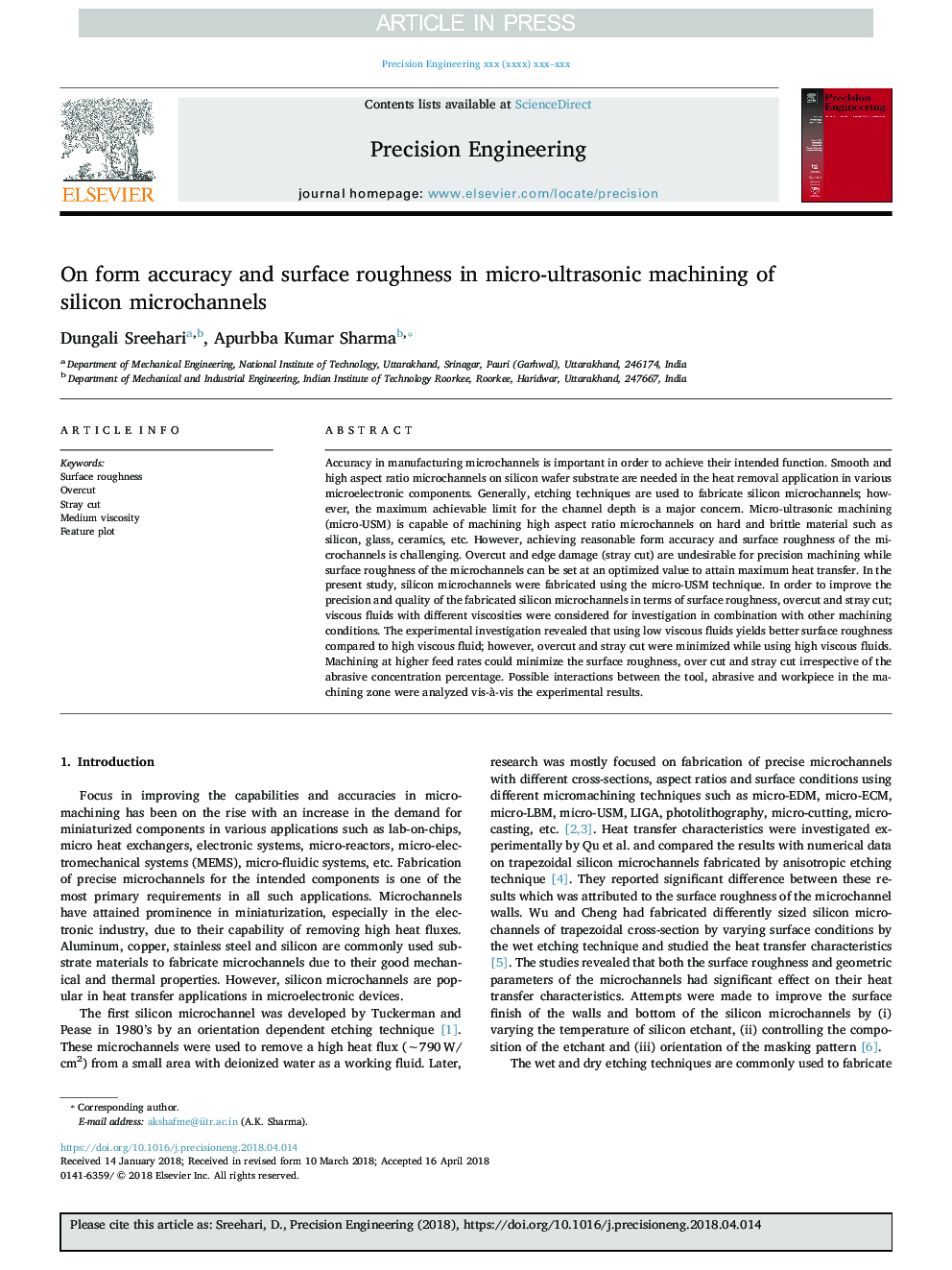| کد مقاله | کد نشریه | سال انتشار | مقاله انگلیسی | نسخه تمام متن |
|---|---|---|---|---|
| 7180386 | 1467835 | 2018 | 10 صفحه PDF | دانلود رایگان |
عنوان انگلیسی مقاله ISI
On form accuracy and surface roughness in micro-ultrasonic machining of silicon microchannels
ترجمه فارسی عنوان
در دقت فرم و زبری سطح در ماشینکاری میکرو اولتراسونیک میکرو کانال سیلیکون
دانلود مقاله + سفارش ترجمه
دانلود مقاله ISI انگلیسی
رایگان برای ایرانیان
کلمات کلیدی
زبری سطح، بیش از حد، خرد شدن برش، ویسکوزیته متوسط، طرح ویژگی،
موضوعات مرتبط
مهندسی و علوم پایه
سایر رشته های مهندسی
مهندسی صنعتی و تولید
چکیده انگلیسی
Accuracy in manufacturing microchannels is important in order to achieve their intended function. Smooth and high aspect ratio microchannels on silicon wafer substrate are needed in the heat removal application in various microelectronic components. Generally, etching techniques are used to fabricate silicon microchannels; however, the maximum achievable limit for the channel depth is a major concern. Micro-ultrasonic machining (micro-USM) is capable of machining high aspect ratio microchannels on hard and brittle material such as silicon, glass, ceramics, etc. However, achieving reasonable form accuracy and surface roughness of the microchannels is challenging. Overcut and edge damage (stray cut) are undesirable for precision machining while surface roughness of the microchannels can be set at an optimized value to attain maximum heat transfer. In the present study, silicon microchannels were fabricated using the micro-USM technique. In order to improve the precision and quality of the fabricated silicon microchannels in terms of surface roughness, overcut and stray cut; viscous fluids with different viscosities were considered for investigation in combination with other machining conditions. The experimental investigation revealed that using low viscous fluids yields better surface roughness compared to high viscous fluid; however, overcut and stray cut were minimized while using high viscous fluids. Machining at higher feed rates could minimize the surface roughness, over cut and stray cut irrespective of the abrasive concentration percentage. Possible interactions between the tool, abrasive and workpiece in the machining zone were analyzed vis-Ã -vis the experimental results.
ناشر
Database: Elsevier - ScienceDirect (ساینس دایرکت)
Journal: Precision Engineering - Volume 53, July 2018, Pages 300-309
Journal: Precision Engineering - Volume 53, July 2018, Pages 300-309
نویسندگان
Dungali Sreehari, Apurbba Kumar Sharma,
